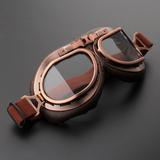Welcome Back! We’re here with a blog topic that’s, well, a banger. Should swimmers train without Goggles?
Swimming with or without Goggles is extremely controversial in the Swim coaches community. So I mean why not talk about it on the SLAF Blog, right? We strongly believe in the benefit of facilitating the discussion to create a conversation and foster learning in the swimming community. Let’s dive in (but with or without GOGGLES?)…
Let’s Get Started!
Did you know Goggles haven’t always been involved with competitive swimming? At first, they were actually considered a competitive advantage and the rule books banned them. Let’s travel back in time and give you a bit of a history lesson on goggles. This is how we got to where we are today (shoutout to Nathan Knopf for help on this subject)!
The First Recorded Goggle Use:
The earliest recorded Goggles being used in the water is dated back to the 14th century. In the novel “Man Under the Sea,” author James Dugan wrote about a pearl fishing expedition with Ibn-Batuta. He writes that a sea-turtle shell can be polished to “NEAR transparency.” And, was perhaps used by Polynesian divers as Goggle lenses before the Europeans introduced them to glass.
Continuing on with our “History of Goggles,” in 1911 Thomas Burgess crossed the English Channel using Motorcycle Goggles and a modified Breaststroke stroke. Then, the first style of modern Goggles were worn by Gertrude Ederle in 1926. She was the first person to swim the English Channel with the front crawl stroke. Can you imagine Open Water Swimming without them?

When Did WE Adopt Goggles Present Day?
Between 1926 and 1967, Goggles became available. BUT, it wasn’t until 1968 that Swimming World ran their first advertisement for Goggles “suitable for competition.” By 1970, the first swimmer (David Wilkie) wore them in an international competition. Ironically, he was also the first swimmer to wear a cap in competition. Watch him swim the 200 Breaststroke in Montreal 1976:
The Training Shift:
It’s obvious that swimmers wouldn’t be able to train in pools with high chlorine levels for very long without Goggles. But the adoption of the modern day Goggle in 1968 and the use of them for racing purposes in 1976 caused a shift across THE WORLD for swim training. Even though there were teams already swimming 2-3x daily with long sets, this invention allowed an even LARGER shift into yardage-based training. Also, they allowed for further skill development like perfecting flip-turns, starts, and breakouts. Basically, Goggles allowed for more time in the water, better vision, and the introduction of interval-based training from Doc Counsilman.
But Goggles Now?
While I think it’s beyond interesting that it took time for Goggles to become mainstream in the competitive swimming world, there is NO DOUBT that they are a NO-BRAINER today. But, should they be?
Well to answer the question on this blog: yes and no.
I answer this question from personal experience; I coach for a local club team in Louisville, KY. Between the two age-group groups I assist with, we had at least 10 Goggle malfunctions at this past weekend’s meet. It actually prompted me to chat with the other coaches on doing a few sets WITHOUT goggles. This was to get the kids COMFORTABLE and ACQUAINTED with what happens when they fall off or fill up with water. If YOU want virtual training with me, check it out here: Virtual Coaching with SLAF!
For instance, last season I had my kids do 12×25 FR without Goggles – hopping out at each end and starting with a running dive. Some of them even decided to keep them around their neck to mimic the race type situation where they had fallen off!
While there was A TON of moaning and groaning about this set – it was worth it. The kids in that group have since been prepared to FINISH THE RACE in any situation!
To swimmers who have swam without them their whole life or have no problem seeing underwater, this may seem too obvious. But you might be surprised to find out how many of your swimmers both cannot and will not function without them. So as a coach, give them the opportunity to practice getting comfortable with the sensation before it’s an emergency, race-type situation.
Will I Always Be At Risk of Having My Goggles Fall Off?
Having your Goggles fall off is a very unfortunate event, but even the best (Michael Phelps included) struggle with the same issues.
Did you know that Michael swam the 200 Butterfly FINAL at the 2008 Olympic Games with his Goggles filled completely with water? The only way he won that race is because he’d done everything so much to perfection. He swam the race essentially with his eyes closed.
Now, while Goggles are definitely the present-day standard, it’s important to get our younger generations prepared!
Be sure to tune in next week on why Goggles give swimmers a competitive advantage. And, we’ll dive into what style(s) are the best for YOU! In the meantime, make sure to check out our other blogs “On Deck.”
Until Next Time,
Abbie Fish

3 Responses
Excellent